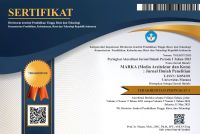The Study of The Architectural Characteristics of Rumah Godong of The Anak Dalam Tribe in Sumatra
Abstract
The Anak Dalam tribe (Suku Anak Dalam or Suku Kubu or Orang Rimba) is one of the tribes in Central Sumatra. This tribe still lives simply and depends on nature in the forest. This tribe has its own very simple traditional house, which indicates the earliest vernacular houses in Sumatra, especially in the "Malay" or Malayic-speaking areas of Central Sumatra. However, a comprehensive study of the architectural characteristics of Rumah Godong is still not well available. What are the characteristics of Rumah Godong? Suku Anak Dalam This research uses a qualitative method approach to descriptively analyze case objects in the field. The results of this study provide a description of the architectural characteristics of Rumah Godong.
Downloads
References
Habraken, N. John (1988). Type as Social Agreement. Seoul: Asian Congress of Architect.
Prasetijo, A. (2011). Serah jajah dan perlawanan yang tersisa: Etnografi orang rimba di Jambi. Jakarta : Wedatama Widya Sastra.
Qulub, S. T. (2016). Konstruksi Ruang Gender Pada Rumah Orang Rimba. Jurnal Musawa Vol. 15 No. 1. Yogyakarta: UIN Sunan Kalijaga.
Sugiyono (2012). Metode Penelitian Kuantitatif Kualitatif dan R & D. Bandung: Alfabeta.
- Abstract 253
- PDF (English) 106
Copyright (c) 2021 Muhammar Khamdevi

This work is licensed under a Creative Commons Attribution-ShareAlike 4.0 International License.









